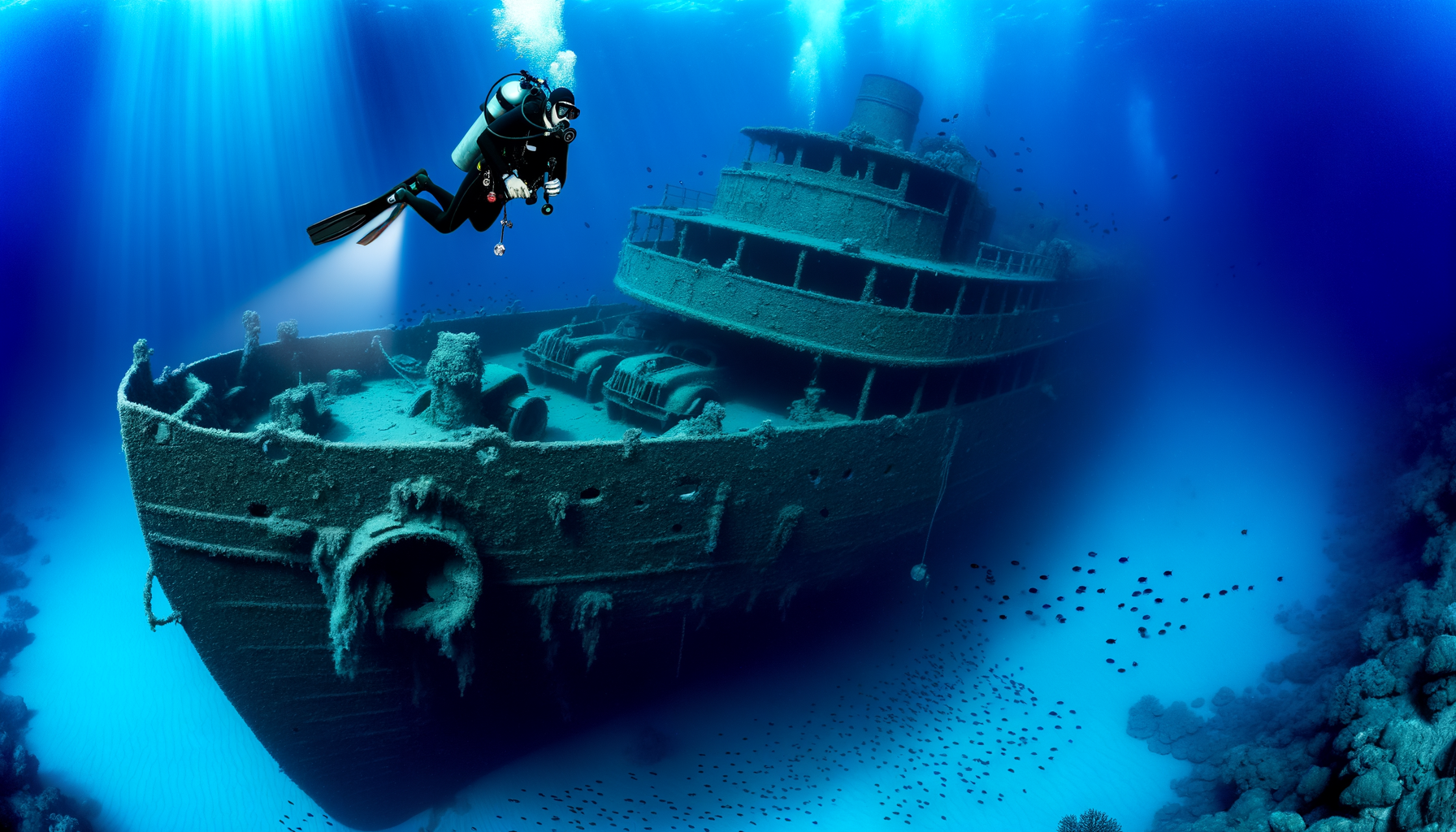
Shipwrecks have long captivated the scuba diving community, offering a blend of historical intrigue and underwater adventure. Scuba divers of all levels, from beginners to technical experts, can find suitable wreck dive sites to explore. Among the top wreck diving destinations, the SS Thistlegorm in Egypt is a highlight, boasting a rich cargo of war vehicles and necessities from its sinking during World War II. The USAT Liberty in Bali is another accessible site, perfect for both snorkeling and diving, with a history of surviving World War I only to be torpedoed in World War II.
The SS President Coolidge in Vanuatu offers a look into luxury turned warship, while the Fujikawa Maru in Micronesia presents an underwater museum of war artifacts. The Caribbean’s Hilma Hooker in Bonaire is known for its clear visibility and the Gunilda in Canada, though only reachable by tec and trimix divers, remains in pristine condition. The SS Yongala in Australia is a top Southern Hemisphere wreck, well-preserved and teeming with marine life, while the SMS Kronprinz Wilhelm in Scotland is part of a scuttled fleet now serving as a dive site. The Bianca C in Grenada provides a mix of reef and pelagic experiences, and the USS Saratoga in the Marshall Islands is an aircraft carrier sunk by atomic testing, now a haven for diverse marine species.
Wreck diving requires special considerations such as appropriate certifications, optimal diving seasons, and potentially additional equipment like dive lights, knives, slates, and reels. Divers are encouraged to take a Wreck Diver specialty course, which prepares them for non-penetration, limited penetration, or full penetration diving, each with varying levels of risk. Entanglement and silt-out are common hazards, but with proper training and buoyancy control, the risks can be managed. Divers passionate about exploring these underwater time capsules can plan their adventures through PADI Travel.



